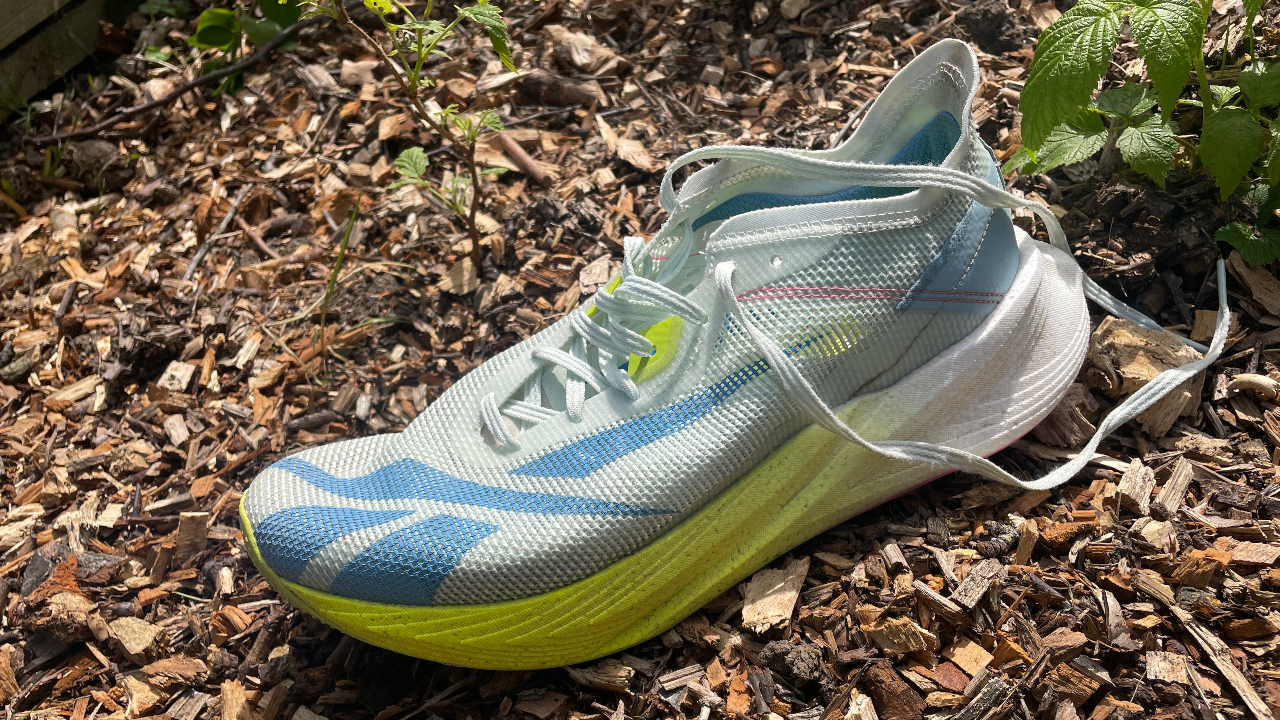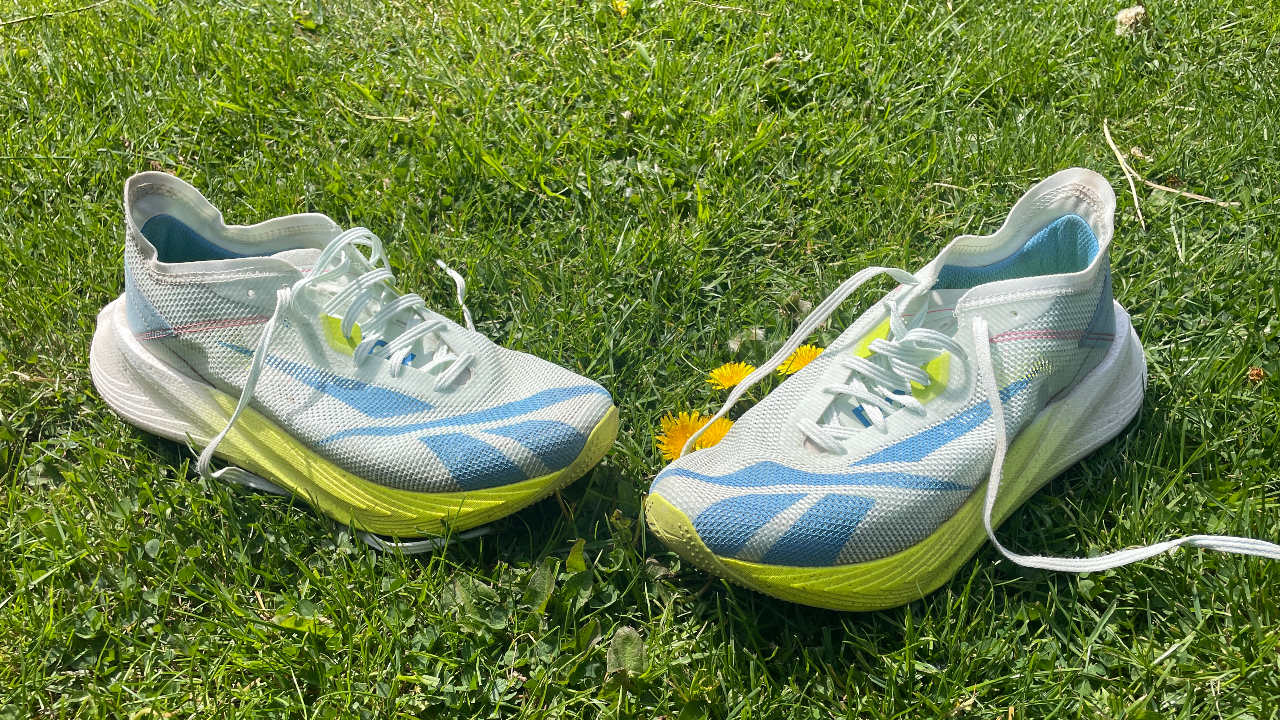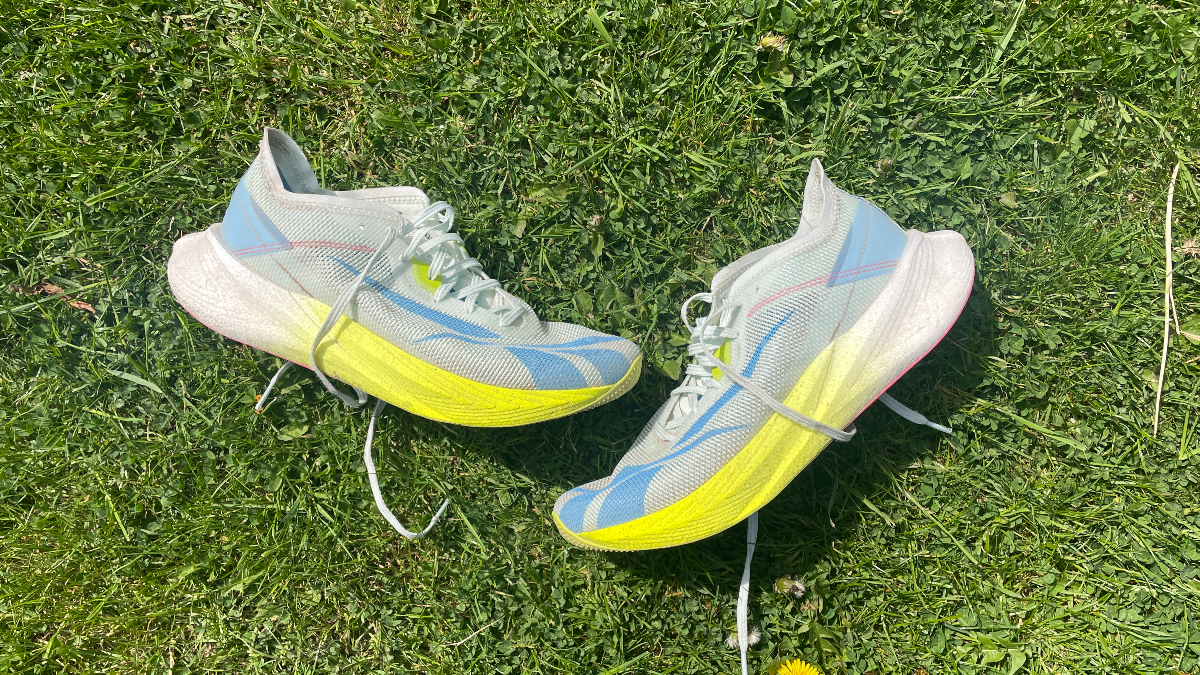Our Verdict
The Floatride Energy X is a good running shoe, especially for longer training runs and races, but even at £130 it is outperformed by other shoes in its price range and doesn’t come close to the standards of bona fide super-shoes.
For
- Good value
- Comfortable ride for long runs
Against
- Not as fast as top carbon shoes
- Only comes in full sizes
- Better daily trainers available for less
You can trust Coach
Reebok has quietly done a great job of producing excellent-value running shoes in recent years, with its stand-out being the Floatride Energy line where the latest version – the Floatride Energy 4 – is a fantastic daily trainer that costs just £75.
That meant I had high hopes the Floatride Energy X could stand up to the best carbon-plate running shoes despite its relatively low price of £130. Unfortunately, while the Energy X is an enjoyable shoe to run in, it not only falls short of expensive carbon shoes but also doesn’t stand out compared with daily trainers that cost similar amounts, so it misses out on a place in our best running shoes round-up.
Reebok Floatride Energy X Review: Price And Availability
The Floatride Energy X is available now and costs £130. That is significantly less than most carbon-plate running shoes, though there is the Hoka Rocket X for £140 and the nylon-plated Saucony Endorphin Speed 2 for £155.
Design And Fit

You can only get the Floatride Energy X in full sizes. Normally, this wouldn’t be a problem for me because I usually wear a size 9 for running shoes, but I have found Reebok shoes come up a bit long, so I’d have preferred an 8.5 were it available.
Sure enough the Floatride Energy X does come up long, so if you are normally a half size you have to choose between having a tighter fit in the toe box by going down or opting for more room. I didn’t have any problems with the fit around the midfoot and heel in the larger size, so that would be my recommendation if you are in between sizes.
The shoe has a breathable mesh upper made from Reebok’s Flexweave material, and though it does look baggy it holds the foot securely even when running fast. The midsole is made from the Floatride Energy foam also used in the Floatride Energy 4, but the Energy X upgrades the ride by adding a carbon plate under the forefoot of the shoe.
While the Floatride Energy foam is not the most impressive foam on the market, it delivers a comfortable and responsive ride on the Floatride Energy 4, and I hoped the addition of the plate might add extra speed for race day.
Sign up for workout ideas, training advice, reviews of the latest gear and more.
The shoe has a 6mm drop from heel to toe and weights 274g in a UK 9, which is somewhat heavy for a carbon shoe – and suggests the Energy X is built more for long events and training rather than being a fully fledged racer. The outsole adds to this impression with the wide coverage of rubber used no doubt increasing the weight of the shoe but improving its durability and grip for regular use.

How I Tested This Shoe
I’ve run 60km in the Floatride Energy X, testing out its speed with a track session running 600m reps and a progressive 9km moving from 3min 45sec/km pace down to 3min 20sec/km pace. I’ve also done easy running in the shoe, and a 22km long run moving from easy to steady pace.
Running Performance
Hoping that I had a real bargain on my hands I treated the Energy X like a proper super-shoe and used it for a couple of challenging sessions for my first two runs. I started with 600m track reps where I wasn’t going all-out but still running at 5K pace or faster, and immediately I had to downgrade my expectations for the shoe. It felt big and heavy on the foot, and while it wasn’t slow, it lacked the pop you want for short intervals.
Keen to see how it handled slower race paces, I used it for a progression run moving from 3min 45sec/km pace down to 3min 20sec/km pace: that meant starting steady, moving past marathon pace and going down to around half marathon and 10K pace. Even here, there was disappointment. At the steady and marathon paces it was OK and rolled along nicely, but it still felt big and I didn’t get anything from the plate. The Floatride Energy foam is good in a daily trainer, but it isn’t all that springy or light.
From then on I did daily training runs in the shoe, keeping the pace fairly relaxed, and the Reebok Energy X was much better for these, especially a 90-minute long run. I was finally able to get into a rhythm where the shoe felt like it was working with my gait and rolling along nicely, but even then I didn’t feel like the plate was adding much. The foam deadened the impact of running without providing a huge amount of energy return.
Is The Reebok Floatride Energy X Worth It?

The Floatride Energy X is outclassed by the competition in several categories. It doesn’t match up at all to the standards of true carbon shoes, and even the cheaper plated options near it are more impressive for fast running – I’d plump for the Hoka Rocket X, Saucony Endorphin Speed 2 or Puma Deviate Nitro if I was looking for a plated trainer/racer. All three are more expensive than the Reebok, but offer more speed while still being versatile training options.
However, you can forgive the Energy X for not being as great as other plated shoes given its low price. The bigger problem is perhaps that there are shoes that offer more value. I enjoyed using it for daily training but there are lots of shoes that are lighter and speedier – even without a plate – that match up to the comfort of the Energy X.
I’d even pick the Floatride Energy 4 over it, since it provides a similar level of performance for a whole lot less, and there is a clutch other great daily trainers out there like the Puma Velocity Nitro 2, Hoka Mach 4 and Nike Pegasus 39 that come in cheaper than the Reebok while performing just as well.
The Energy X is a good shoe to use for long training runs and would be a solid marathon racing shoe for new runners, but it underwhelms as a carbon racing shoe and there are better options available for training, either for a little more money or even a fair bit less.

Nick Harris-Fry is a journalist who has been covering health and fitness since 2015. Nick is an avid runner, covering 70-110km a week, which gives him ample opportunity to test a wide range of running shoes and running gear. He is also the chief tester for fitness trackers and running watches, treadmills and exercise bikes, and workout headphones.

